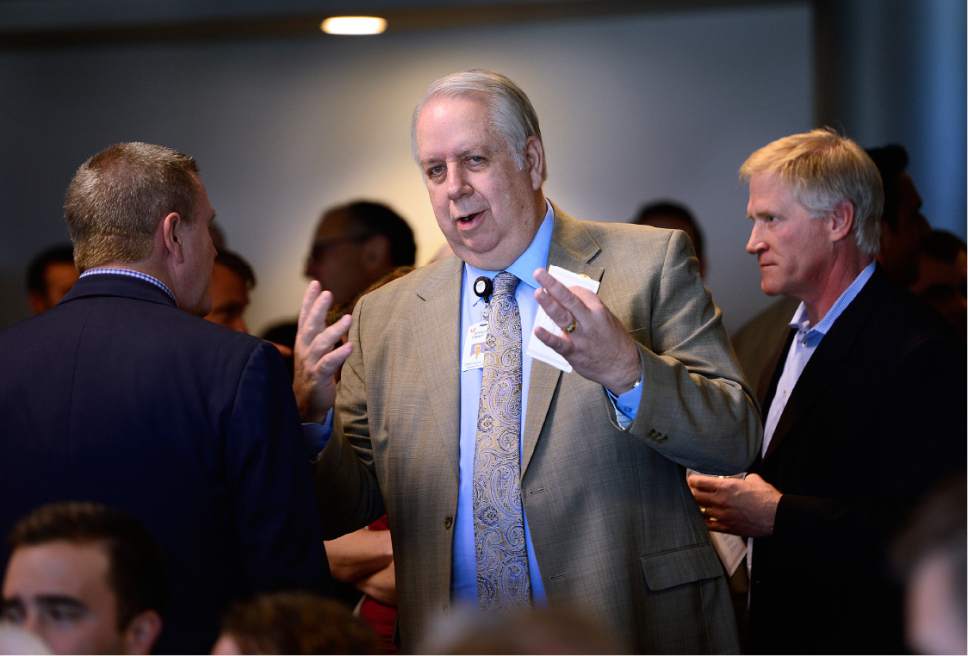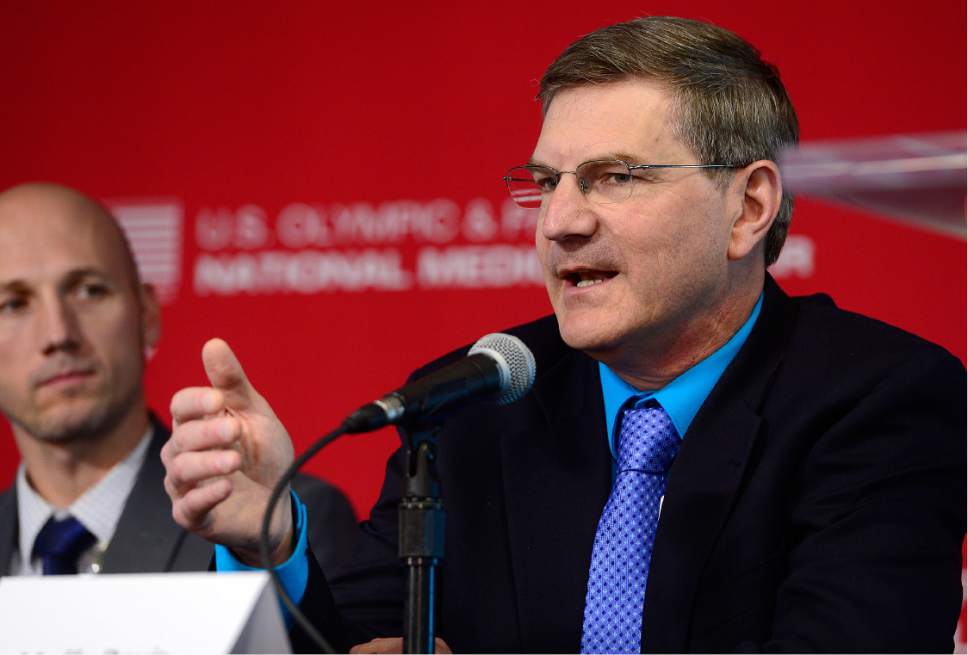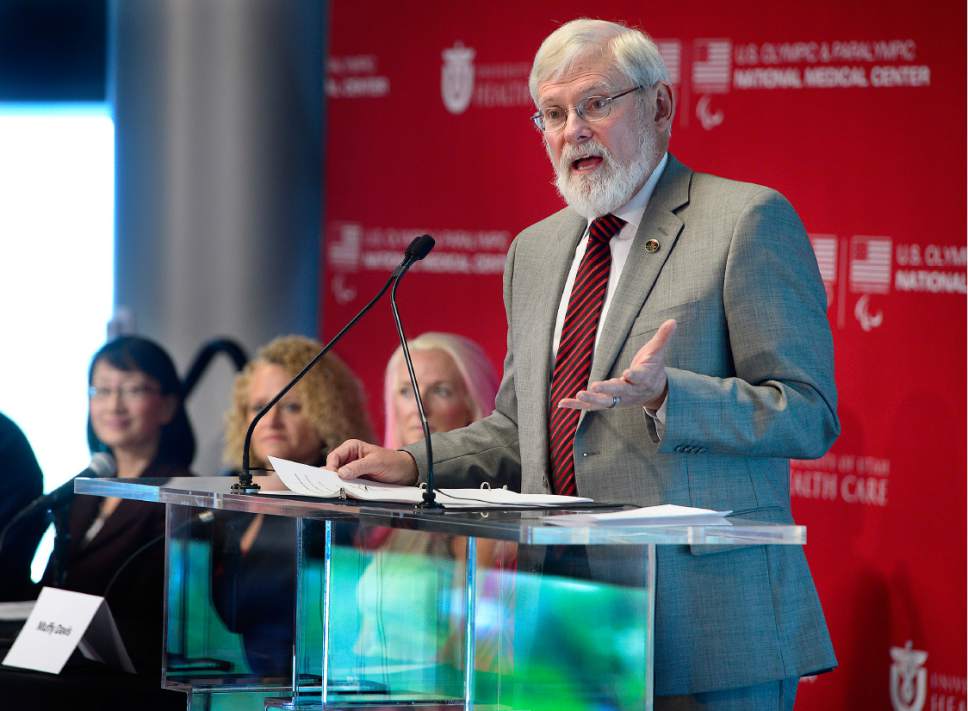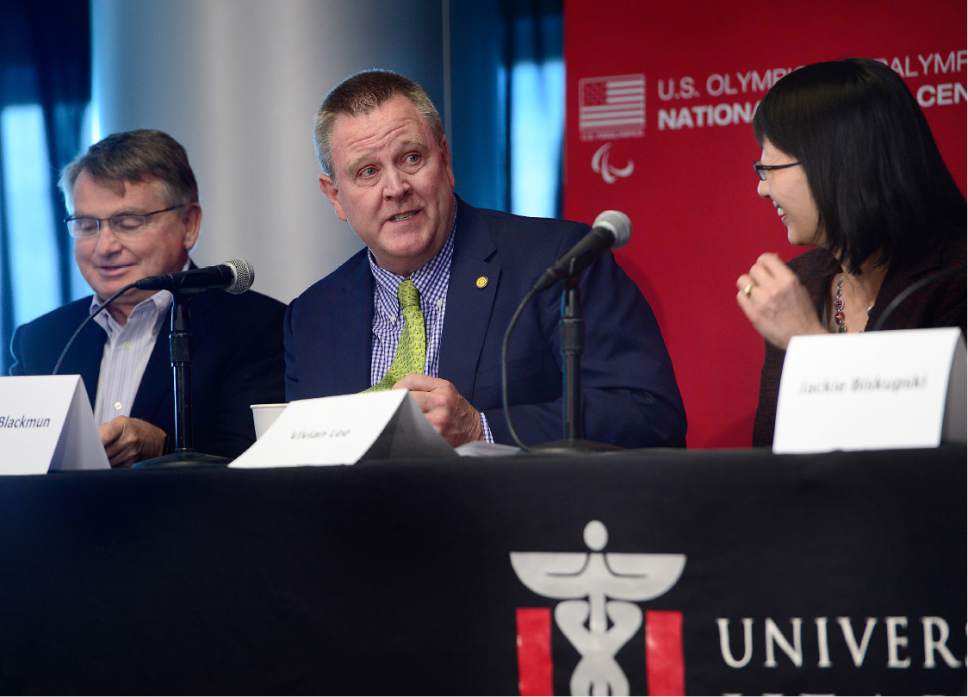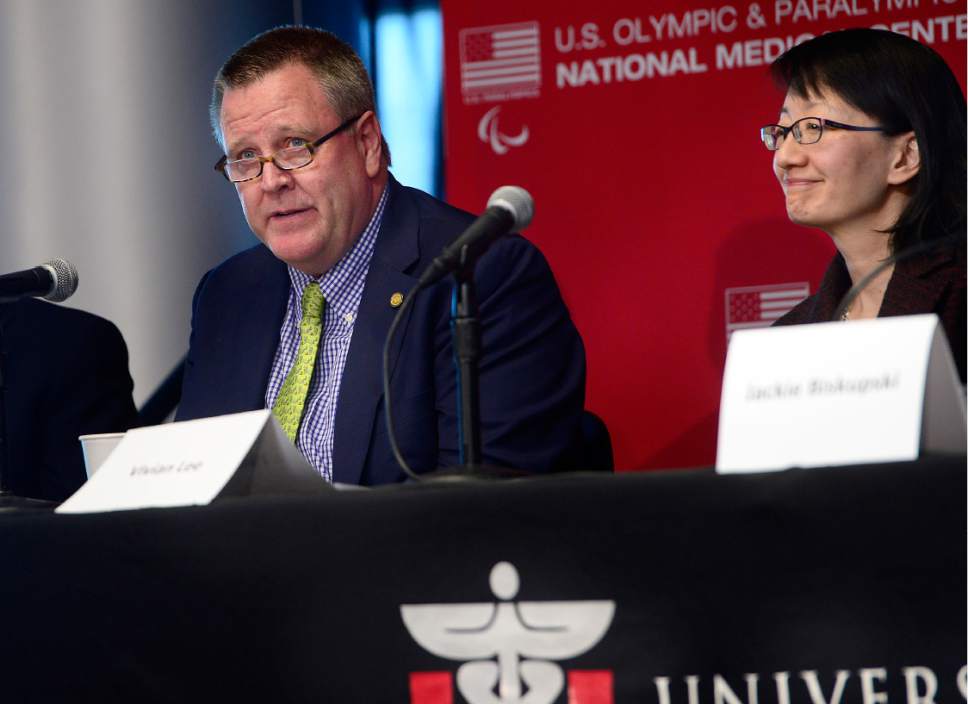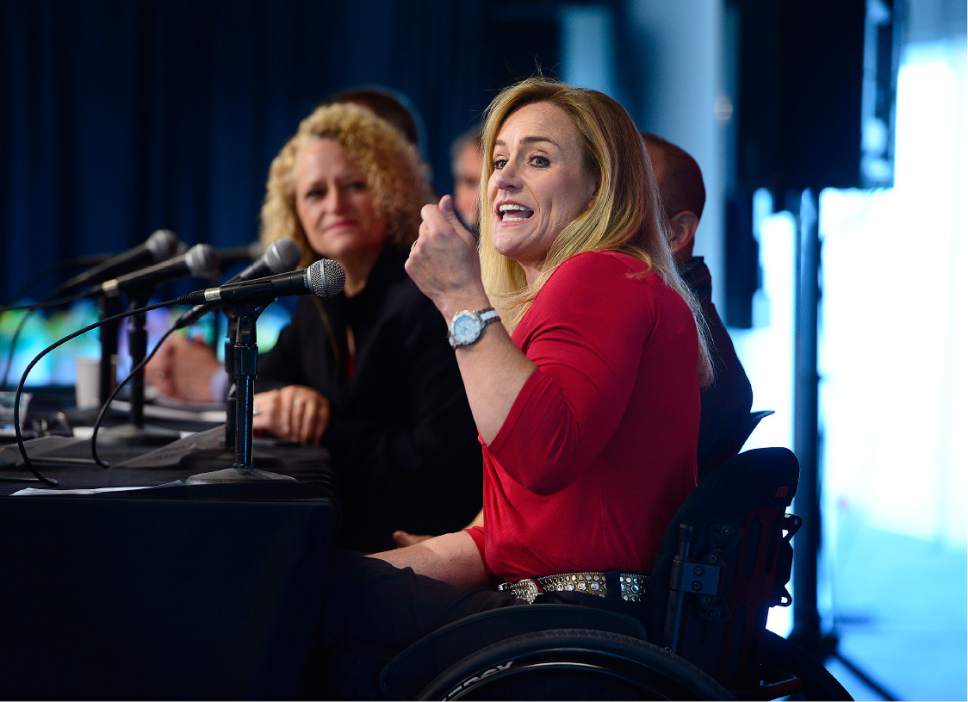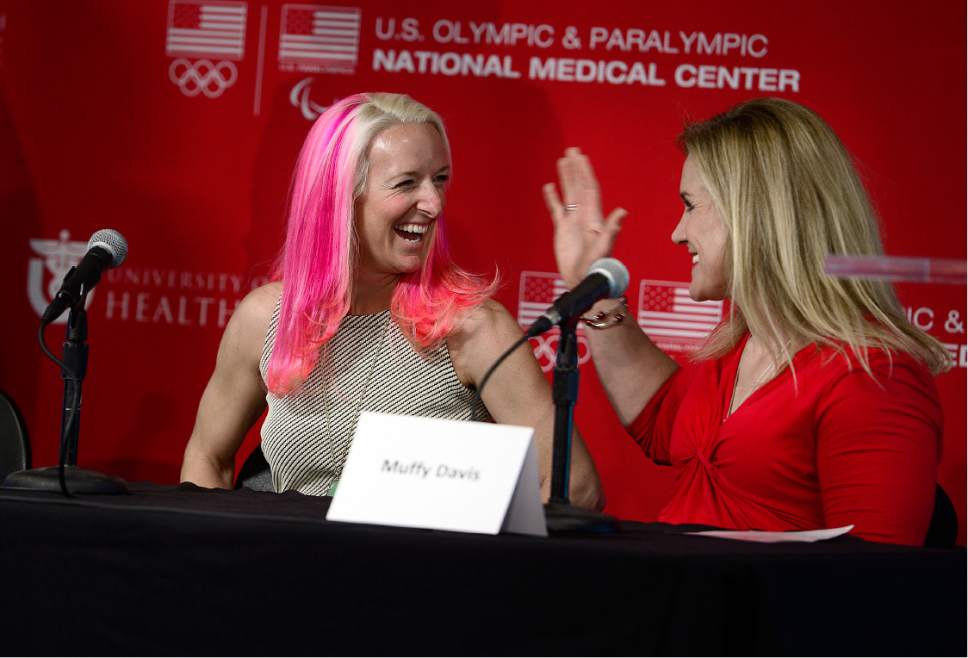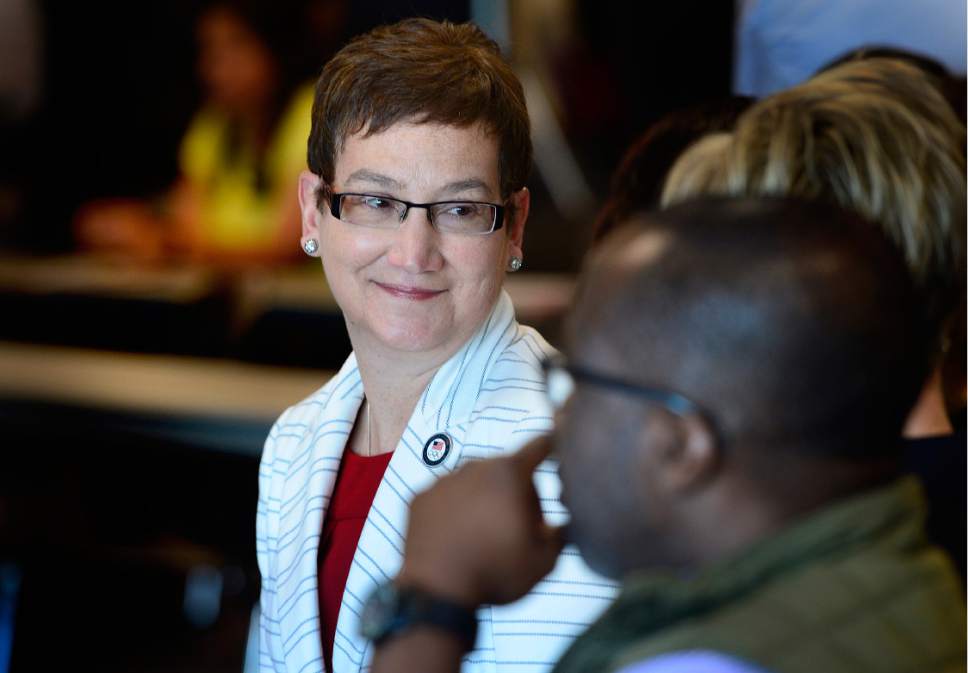This is an archived article that was published on sltrib.com in 2016, and information in the article may be outdated. It is provided only for personal research purposes and may not be reprinted.
An infectious-disease team from University of Utah Health Care is leading the way in helping the U.S. Olympic Committee (USOC) deal with the threat of Zika virus at the 2016 Summer Games in Rio de Janeiro.
That relationship is at the forefront of a much larger partnership announced Wednesday between the university and the USOC, which designated the U. as one of three medical centers in its new National Medical Network. The others are Hospital for Special Surgery in New York City and Steadman Philippon Research Institute and Clinic in Vail, Colo.
The U. will provide specialized care for elite athletes — from orthopedic treatment to psychiatry. Research conducted by some of its doctors and specialists will be driven by issues affecting athletes.
In addition, USOC athletes — summer as well as winter — will get educational opportunities and internships at the U., particularly at its David Eccles School of Business, where programs also will be developed in outdoor-equipment innovation and sports management.
"We're proud to be part of the living legacy of the spectacularly successful 2002 Winter Olympics," U. President David Pershing said at a news conference in the Rice-Eccles Stadium tower.
"Our excellence in sports medicine and fitness, combined with our research expertise, makes this the right time, the right place and right partnership," added Vivian Lee, U. Health Care CEO, calling the educational component a valuable tool for team members "so that once their athletic journey comes to an end, they are able to achieve success in the next phase of their lives."
The USOC invited the U. to be its partner, said Bill Moreau, USOC managing director of sports medicine, because of its "longstanding history of high quality medical care, leadership in sports medicine, research initiatives — and a location that allows them to support key winter sports."
Moreau expects the result to be "cutting-edge advancements in sports medicine with an eye on high-performance outcomes."
Salt Lake City Mayor Jackie Biskupski thanked the USOC "for recognizing Salt Lake City as the premier capital of sport," noting that "as an Olympic athlete is always an Olympian, Salt Lake will always be an Olympic city."
Justifiably so, said Alan Ashley, the USOC's managing director of sports performance and a former Utahn, citing the state's support of the Olympics for decades.
Predicting the U.'s medical contributions will help elevate more U.S. athletes to Olympic medals, he said there will be "legends to come because of the passion the state of Utah brings to this movement."
While many USOC summer athletes make final preparations for the Olympics in Rio this Aug. 5-21, a U. infectious-disease team led by Carrie Byington already has begun a pilot study to address Zika, a virus primarily spread by mosquitoes that has been blamed for an increase in microcephaly among newborns.
Chairwoman of the USOC's infectious-disease advisory group, Byington has been monitoring about 100 athletes who are training in Brazil and advance-team members attending to the many arrangements that must be made before a large Olympic team arrives on site.
She and her team are developing a diagnostic tool with ARUP that will help medical personnel and the U.S. Olympic Team evaluate who is at risk of contracting the virus and to develop treatment strategies, said Byington, an endowed chair in the department of pediatrics.
Athletes also will be tracked for two years after the Games, with a particular eye out for impacts on pregnancies. What's learned will have wider implications in advancing science, Byington said, "as we learn from this committed group of individuals."
USOC Chief Executive Scott Blackmun said "Zika is an incredibly important topic to us. Having this group [of health advisers] for the athletes and delegation has been a godsend."
Longer term, "working with the U. made the most sense," he said. "Sustained excellence is our goal. The fact that our athletes have access to tremendous medical care will help us accomplish that mission. We're happy today to call you teammates."
Former athletes Muffy Davis, Shannon Bahrke and Derek Parra all expressed devotion to the medical professionals who kept them going, noting that few athletes reach an Olympic podium without having spent many hours receiving treatment for injuries.
"It's a family," said Bahrke, a 2002 freestyle moguls silver medalist, comparing notes on her voluminous list of injuries with legendary Paralympian Davis.
"The people who do the MRIs, the people who put you together when you're physically and mentally broken, the people behind the scenes do that," Bahrke said. "Thanks for all you've done for me. I've been here a lot."
That's why we're here, said Lee: "We're proud to bring our best to help the Olympic team bring theirs."


